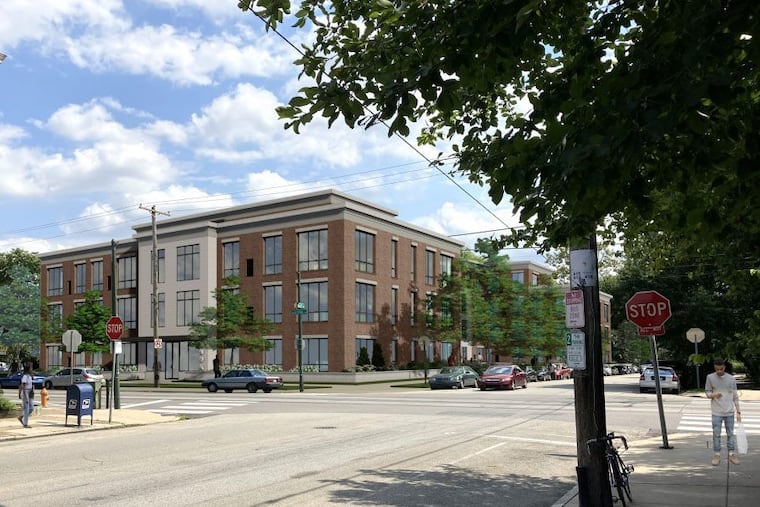Supporting affordable housing in Philly means supporting an increase in density | Editorial
Squirrel Hill's "poop building" is Philadelphia’s latest example of how our city’s zoning disputes have become a flashpoint in the ongoing struggle between development and neighborhood concerns.

A nondescript proposed three-story building that would replace a dog park in Squirrel Hill is Philadelphia’s latest example of how our city’s zoning disputes have become a flashpoint in the ongoing struggle between new development and neighborhood concerns.
The developer of the building agreed to an unprecedented commitment of affordability — a fifth of the building’s units — in exchange for the ability to break height and density restrictions. But after zealous opposition, the district’s councilmember, Jamie Gauthier, announced her opposition ahead of a Zoning Board meeting on the project.
» READ MORE: Housing advocates see denser buildings as an answer to affordability. But not all density is good density.
Gauthier’s position, and her statement, is confusing. She wrote that “securing long-term, deeply affordable units in new construction” (as the developer proposed) is “one meaningful way” to help people who are priced out of the private market. But Gauthier opposed the development because of the volume of feedback she received from constituents.
This happens everywhere. Consider the case of Society Hill, an affluent neighborhood that fought to prevent increases in density. Frustrated by plans to build a tower on Walnut Street, residents organized to thwart new density in their neighborhood, because they were upset about parking and the loss of prime skyline views.
This tension around zoning results from a lack of clarity about housing and development. Philadelphia needs more homes. A lack of inventory is sending local home prices through the roof. One of the ways you can add homes is through increasing density.
» READ MORE: Society Hill neighbors fight latest proposal for condo tower at the historic Dilworth House
For many longtime Philadelphia residents, today’s development boom seems unprecedented. In some ways, they are right. From a peak in 1950 until the year 2000, Philadelphia’s population consistently shrank. There was very little building for density during this time, because there was little demand for it. Over the last 20 years, however, Philadelphia has begun to grow again. That means that our leaders need to find places where new homes can be built.
Philadelphia has different limits on how much can be built in each area. This is done through zoning. Opponents to density raise issues with facades, the character of the neighborhood, and fears that new development will bring more gentrification, displacing longtime residents. But limiting density has also been a critical tool to keep people out of neighborhoods, increasing segregation by race and class. In cities like San Francisco, where over 80% of the land is zoned for low-density housing, prices are among the highest in the country, and the Black share of the local population has decreased over decades.
Councilmembers often claim to want more homes and more affordable housing, but by blocking projects to increase density in their districts, they are supplying fewer homes and contributing to price inflation across the city, putting housing out of reach for more people.
When zoning for density and housing, City Council must be clear about why they are allowing it — or not allowing it. If the goal is to protect affluent neighborhoods from buildings they think are too tall and the need to compete for street parking, they should be clear about how this will push demand into other neighborhoods. That’s the first step in ensuring that Philadelphia’s housing needs can be met and City Council’s rhetoric will match their actions.